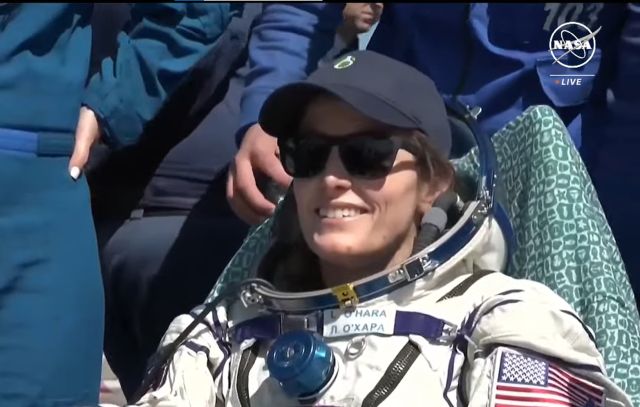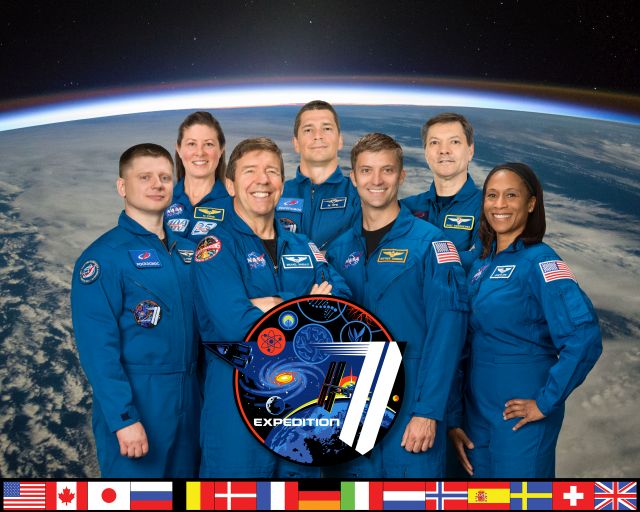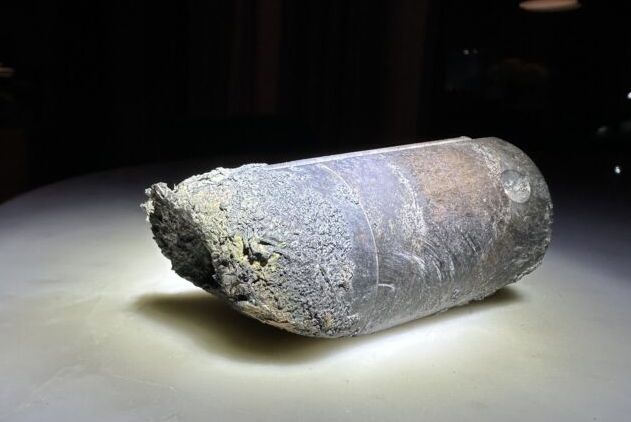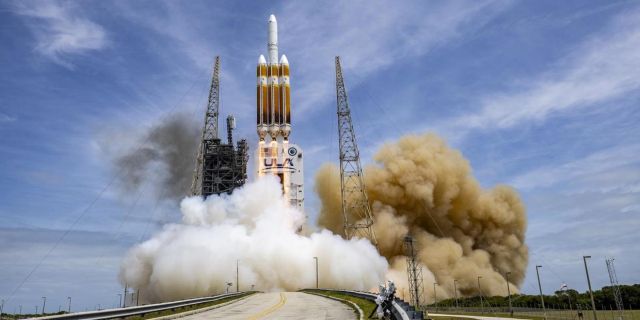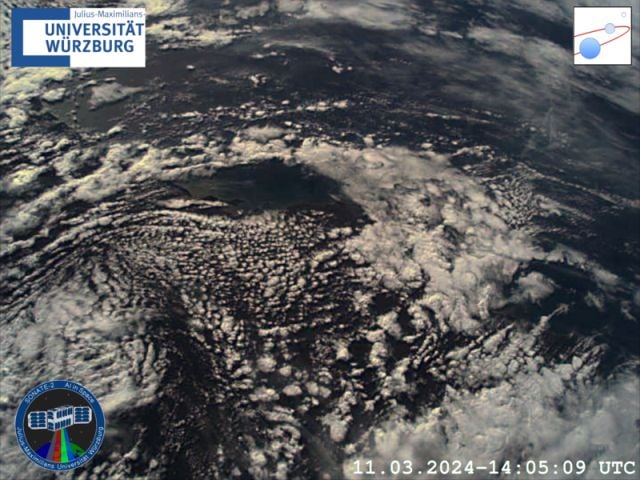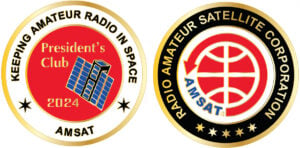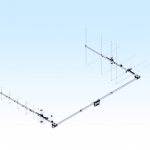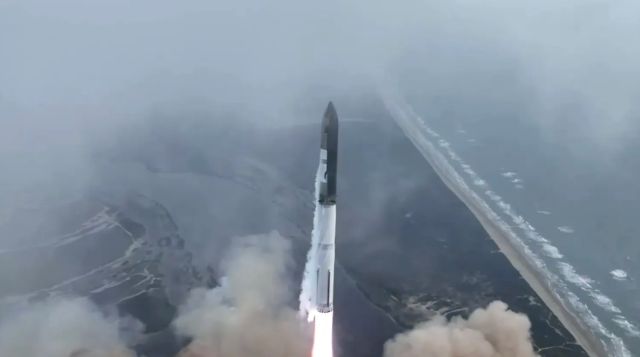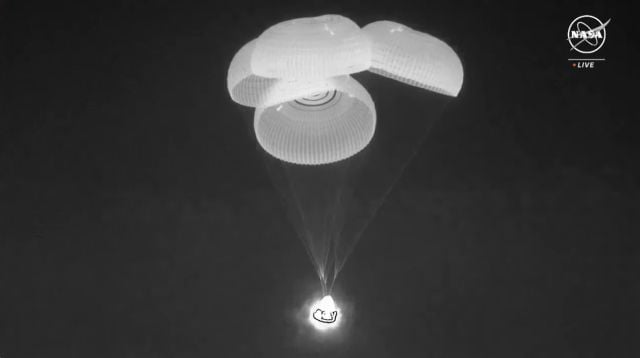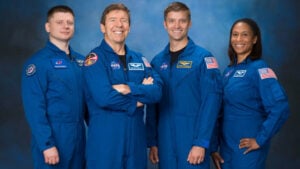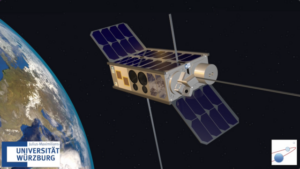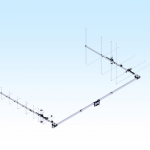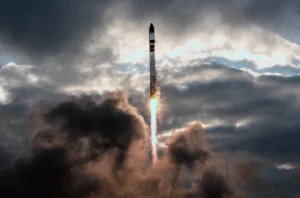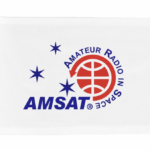In this edition:
* AMSAT at Hamvention
* Save the Date! Symposium 2024
* Multiple QO-100 DX-Peditions to VO1
* Lost and Found: Missing Satellite Rediscovered
* Starliner: A Decade of Challenges
* 2024 AMSAT Board of Directors Election
* Changes to AMSAT-NA TLE Distribution for May 16
* ARISS News
* Upcoming Satellite Operations
* Hamfests, Conventions, Maker Faires, and Other Events
* Satellite Shorts From All Over
The AMSAT News Service bulletins are a free, weekly news and information service of AMSAT, the Radio Amateur Satellite Corporation. ANS publishes news related to Amateur Radio in Space including reports on the activities of a worldwide group of Amateur Radio operators who share an active interest in designing, building, launching and communicating through analog and digital Amateur Radio satellites.
The news feed on http://www.amsat.org publishes news of Amateur Radio in Space as soon as our volunteers can post it.
Please send any amateur satellite news or reports to: ans-editor [at] amsat.org
You can sign up for free e-mail delivery of the AMSAT News Service Bulletins via the ANS List; to join this list see: https://mailman.amsat.org/postorius/lists/ans.amsat.org/
ANS-140 AMSAT News Service Weekly Bulletins
To: All RADIO AMATEURS
From: Radio Amateur Satellite Corporation
712 H Street NE, Suite 1653
Washington, DC 20002
DATE 2024 May 19
AMSAT at Hamvention
This issue of the AMSAT News Service bulletins is being produced at the AMSAT booth at Hamvetion 2024 in Xenia, Ohio. AMSAT has a major presence at Hamvention, with booths devoted to teaching satellite basics, membership recruitment, the AMSAT Store, Engineering, Education, and the Ambassador program.
Traffic was heavy on Friday morning, May 17, as soon as Hamvention opened its doors. While some came directly to the AMSAT booth with their questions, or to make purchases at the Store, many other ham attendees were attracted by the displays as they wandered through the several Hamvention venues.
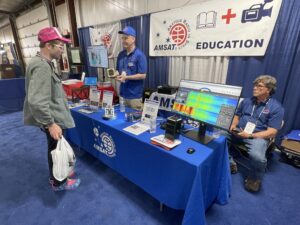 Volunteer members of the AMSAT Engineering team were on hand to show off models of the GOLF-Tee and Fox Plus satellites currently under construction. Engineering team members also discussed various projects that are part of the ASCENT program, developing possible components for future satellites.
Volunteer members of the AMSAT Engineering team were on hand to show off models of the GOLF-Tee and Fox Plus satellites currently under construction. Engineering team members also discussed various projects that are part of the ASCENT program, developing possible components for future satellites.
At the Education booth, Cubesat SIM models were transmitting actual telemetry and slow-scan TV data across the table, demonstrating how these tools can be assembled and used in classrooms and other settings to provide hands-on instruction in satellite basics.
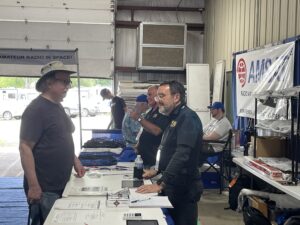 At the “Beginners Corner,” experienced satellite operators answered questions and helped the curious to understand how easy and exciting it is to get started in this fascinating aspect of the amateur radio hobby. Rain on Friday morning prevented live satellite demonstrations, but these took place as satellite passes and Hamvention circumstances permitted on Saturday and Sunday.
At the “Beginners Corner,” experienced satellite operators answered questions and helped the curious to understand how easy and exciting it is to get started in this fascinating aspect of the amateur radio hobby. Rain on Friday morning prevented live satellite demonstrations, but these took place as satellite passes and Hamvention circumstances permitted on Saturday and Sunday.
The sixteenth annual joint AMSAT/ TAPR Banquet was held on Friday evening at the Kohler Presidential Banquet Center in Kettering, Ohio, just south of Dayton. This year’s banquet speaker was Bill Reed, NX5R, AMSAT PACSAT Project Manager, who highlighted the forthcoming PACSAT digital communications payload. This payload is drawing on lessons learned from previous digital satellites to provide smoother operations for users in the future.
The AMSAT Forum was held on Saturday afternoon. Robert Bankston KE4AL, AMSAT President, highlighted recent activities within AMSAT and discussed some of our challenges, accomplishments, projects, and late breaking news (See following story). Jerry Buxton, NØJY, AMSAT Vice President for Engineering, provided a video status update about upcoming satellite missions currently in development. Alan Johnston, KU2Y, AMSAT Vice President Education Relations, spoke about opportunities for using the AMSAT CubeSat Simulator in educational settings. Drew Glasbrenner, KO4MA, Vice President Operations, briefed those attending on the status of current satellites. And Frank Karnauskas, N1UW, Vice President of AMSAT Development, reported on the AMSAT Youth Initiative and its features.
Attendance was steady at all AMSAT exhibits throughout the Hamvention weekend, and satellite operators enjoyed meeting, fact to face, the voices and callsigns encountered on the satellites.
[ANS thanks Mark Johns, KØJM, ANS Senior Editor, for the above information]
The 2024 AMSAT President’s Club coins are here now!
Help Support GOLF and Fox Plus
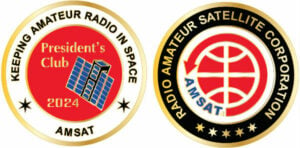
Join the AMSAT President’s Club today and help
Keep Amateur Radio in Space!
https://www.amsat.org/join-the-amsat-presidents-club/
Save the Date! Symposium 2024
Mark your calendar now for the 2024 AMSAT Symposium, October 25-27, 2024 in Tampa, Florida!
AMSAT President Robert Bankston, KE4AL, announced this week at the Hamvention that the 2024 Symposium will be held October 25-27, 2024 at the Doubletree by Hilton Tampa Rocky Point Waterfront.
[ANS thanks AMSAT President Robert Bankston, KE4AL, for the above information]
Multiple QO-100 DX-Peditions to VO1
This week sees three separate groups operating from just outside the coverage footprint of the QO-100 satellite.
From Newfoundland the geostationary QO-100 satellite is nominally 1 degree below the horizon. After 5 years in orbit and much speculation, three groups are in the St. John’s area to try operating QO-100 with its S band uplink and 10GHz downlink.
First in Newfoundland was Gopan, M0XUU. He was operating with a 0.8m dish from just north of the harbor entrance and updates could be found on the QO-100 DX Club web site. https://qo100dx.club/ Despite frequency periods of no signal or deep QSB, Gopan managed to work stations via FT8, FT4, and CW. After a week on the air as VO1/M0XUU, Gopan left Newfoundland on May 15.
Arriving Monday 13 May and remaining until to Friday 17, was a Canadian team with a 1.8m dish and up to 100W. Poor weather hampered their operations. Details of the operation by Stefan Wagener, VE4SW, and John Langille, VE1CWJ, can be found at the QRZ.com page for special callsign, VO100QO at https://www.qrz.com/db/VO100QO
Finally, Graham Shirville, G3VZV, and David Bowman, G0MRF, arrived on Wednesday, May 15 with two sets of equipment and were active as VO1/G3VZV and VO1/G0MRF. They will fly back to the UK early Sunday, May 19. Operating from the old lighthouse keepers bungalow on the southern side of the harbor entrance, GN37PN85, they attempted working all modes including an attempt with DATV with a 175W S band amplifier. When not actively on the bands, a personal beacon was operating on 10489.539 MHz in CW to act as a propagation indicator.
[ANS thanks David Bowman, G0MRF, for the above information]
Need new satellite antennas?
Purchase M2 LEO-Packs from the AMSAT Store.
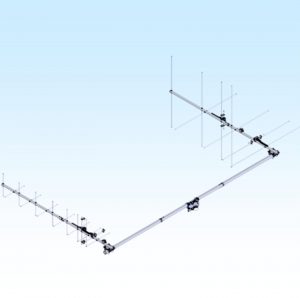
When you purchase through AMSAT, a portion of the proceeds goes towards
Keeping Amateur Radio in Space.
https://amsat.org/product-category/hardware/
Lost and Found: Missing Satellite Rediscovered
After 25 years lost in the vastness of space, a missing satellite has finally been located, highlighting the challenges of tracking the multitude of objects orbiting Earth. The rediscovery sheds light on the difficulty of monitoring the approximately 27,000 objects that populate Earth’s orbit, a number that continues to grow with each rocket launch and satellite deployment.
The satellite in question, the Infra-Red Calibration Balloon (S73-7), was part of the United States Air Force’s Space Test Program and was launched in 1974. Its purpose was to serve as a calibration target for remote sensing equipment, but a deployment failure left it adrift as space debris. Despite initial attempts to track its whereabouts, it vanished from ground-based sensors in the 1990s, only to resurface last month.
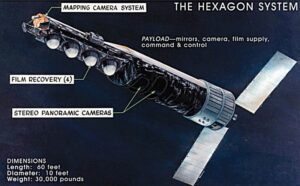 The Air Force’s KH-9 Hexagon satellite deployed the tiny IRCB (S73-7) satellite in 1974. (Illustration: U.S. Air Force)
The Air Force’s KH-9 Hexagon satellite deployed the tiny IRCB (S73-7) satellite in 1974. (Illustration: U.S. Air Force)
Jonathan McDowell, an astrophysicist from the Harvard-Smithsonian Center for Astrophysics, discovered the satellite’s reappearance while reviewing archival data. He explained that the satellite’s low radar cross section and possible malfunctioning equipment made it difficult to detect. This underscores the challenges faced by ground-based radar and optical sensors tasked with monitoring objects in orbit.
Tracking objects in space is akin to air traffic control, with sensors relying on identifying the orbit of moving objects and matching them with designated satellite orbits. However, this becomes increasingly complex as Earth’s orbit becomes more congested, particularly in geostationary orbit where monitoring is hindered by a lack of radars positioned precisely on the equator.
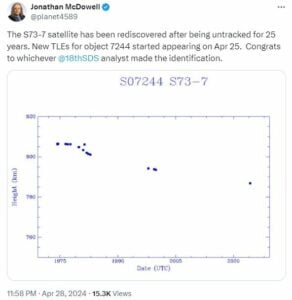
A screenshot of a screenshot of a graph Description automatically generated
The Department of Defense’s Space Surveillance Network currently tracks over 27,000 objects, predominantly defunct satellites and debris. As the number of satellites and rocket launches continues to rise, maintaining accurate tracking becomes crucial to mitigate the risk of collisions and space debris hazards.
While the rediscovery of the missing satellite serves as a reminder of the challenges of space tracking, it also underscores the importance of continued efforts to monitor and manage Earth’s orbital environment. With technology evolving and space activity increasing, effective space surveillance remains paramount to ensure the safety and sustainability of activities in Earth’s orbit.
[ANS thanks Passant Rabie, Gizmodo, for the above information]
Starliner: A Decade of Challenges
Boeing is delaying its first flight with humans on its Starliner spacecraft yet again, the company said on May 14. The launch, which has been delayed for years and was most recently scheduled for May 18, was pushed back until Tuesday afternoon, May 21 at the earliest because of a helium leak.
Boeing’s Starliner spacecraft marks the culmination of a tumultuous journey fraught with setbacks and challenges. What’s surprising isn’t merely Boeing’s eventual loss in the commercial crew space race to SpaceX but rather the fact that Boeing managed to reach this point at all.
The story traces back a decade when NASA’s human spaceflight leaders convened to select a replacement vehicle for the retired Space Shuttle. Boeing emerged as the frontrunner, backed by its illustrious history in spaceflight. However, the eventual decision to award contracts to both Boeing and SpaceX marked the beginning of Boeing’s struggle to adapt to the demands of a fixed-price environment.
 Boeing’s Starliner spacecraft is lifted to be placed atop an Atlas V rocket for its first crewed launch. [Credit: NASA/Cory Huston]
Boeing’s Starliner spacecraft is lifted to be placed atop an Atlas V rocket for its first crewed launch. [Credit: NASA/Cory Huston]
Unlike SpaceX, which was already immersed in multiple space projects, Boeing found itself grappling with a new paradigm. Accustomed to cost-plus contracts, where expenses could be billed to the government, Boeing now faced the challenge of delivering a spacecraft within strict budget constraints. This shift exposed deep cultural and structural inefficiencies within the company.
Boeing’s difficulties were compounded by technical hurdles, particularly in software development and propulsion. Fragmented software teams and strained relationships with suppliers like Aerojet Rocketdyne hindered progress. The consequences of these challenges became evident during Starliner’s ill-fated uncrewed test flight in 2019, marred by critical software errors and propulsion anomalies.
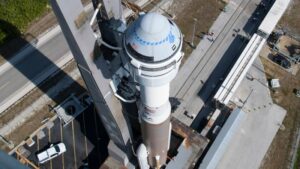 Boeing’s CST-100 Starliner ahead of the Orbital Flight Test-2 (OFT-2) mission in 2022 [Credit: NASA/Joel Kowsky]
Boeing’s CST-100 Starliner ahead of the Orbital Flight Test-2 (OFT-2) mission in 2022 [Credit: NASA/Joel Kowsky]
While Boeing struggled, SpaceX surged ahead, buoyed by its vertically integrated approach and a culture of innovation. SpaceX’s success underscored the shortcomings of Boeing’s traditional aerospace model, further exacerbated by broader crises within Boeing’s aviation division, notably the 737 MAX disasters and the COVID-19 pandemic.
Boeing’s tumultuous journey with Starliner offers valuable lessons about the perils of resisting change and the imperative of embracing innovation in the rapidly evolving space industry. Despite its setbacks, Boeing’s perseverance underscores the dedication of the engineers and technicians who tirelessly worked to bring Starliner to fruition.
[ANS thanks Eric Berger, Ars Technica, for the above information]
2024 AMSAT Board of Directors Election – Call for Nominations
AMSAT solicits nominations for the 2024 AMSAT Board of Directors election, to be held in the third quarter of the year. The seats of the following three incumbent Directors expire in 2024 and will be filled by this year’s election:
– Mark Hammond, N8MH
– Bruce Paige, KK5DO
– Paul Stoetzer, N8HM
Further, up to two Alternate Directors may be elected for one-year terms. A valid nomination for Director must be written and requires either one Member Society or five current individual members in good standing to nominate an AMSAT member. Written nominations, with the nominee’s name, call sign, and contact information, as well as the nominators’ names, call signs, and contact information, should be sent to the AMSAT Secretary:
Jeff Davis, KE9V
PO Box 11
Yorktown, IN 47396
AMSAT bylaws require that the nomination be written and in the form specified by the Secretary who has elected to accept written nomination materials via postal mail or in electronic form, including email or electronic image of a paper document. Fax transmissions cannot be accepted.
Email nominations may be sent to jdavis [at] amsat [dot] org.
No matter what means are used, petitions MUST be received by the Secretary no later than June 15th. The Secretary will verify the qualifications of candidates and nominating members or Member Societies as petitions are received and will notify candidates whether their nominations are in order by the end of June.
[ANS thanks Jeff Davis, KE9V, AMSAT Secretary for the above information.]
Want to fly the colors on your own grid expedition?
Get your AMSAT car flag and other neat stuff from our Zazzle store!
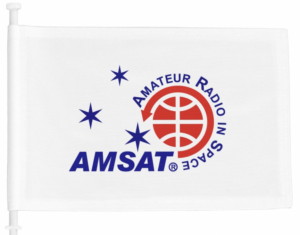
25% of the purchase price of each product goes towards
Keeping Amateur Radio in Space
https://www.zazzle.com/amsat_gear
Changes to AMSAT-NA TLE Distribution for May 16
Two Line Elements or TLEs, often referred to as Keplerian elements or keps in the amateur community, are the inputs to the SGP4 standard mathematical model of spacecraft orbits used by most amateur tracking programs. Weekly updates are completely adequate for most amateur satellites. TLE bulletin files are updated daily in the first hour of the UTC day. New bulletin files will be posted immediately after reliable elements become available for new amateur satellites. More information may be found at https://www.amsat.org/keplerian-elements-resources/.
The following satellite has been removed from this week’s AMSAT-NA TLE distribution:
CHOMPTT NORAD Cat ID 43855 Decayed from orbit on or about 13 May 2024
[ANS thanks Joe Fitzgerald, KM1P, AMSAT Orbital Elements page editor, for the above information]
ARISS NEWS
Amateurs and others around the world may listen in on contacts between amateurs operating in schools and allowing students to interact with astronauts and cosmonauts aboard the International Space Station. The downlink frequency on which to listen is 145.800 MHz worldwide.
COMPLETED:
Eric Knows CIC, Newcastle upon Tyne, United Kingdom, telebridge via K6DUE
The scheduled crewmember was Matthew Dominick, KCØTOR. The ARISS mentor was MØXTD
Contact was scheduled for: Sat 2024-05-11 08:42:32 UTC 48 degrees elevation
UPCOMING:
Ulukulevo Secondary School, Ulukulevo, Bashkortostan, Russia, direct via TBD
The ISS callsign is presently scheduled to be RSØISS
The scheduled crewmember is Nikolay Chub. The ARISS mentor is RV3DR.
Contact is go for Wed 2024-05-22 15:05 UTC
Amur State Medical Academy, Blagoveshchensk, Russia, direct via TBD
The ISS callsign is presently scheduled to be RSØISS
The scheduled crewmember is Nikolay Chub. The ARISS mentor is RV3DR.
Contact is go for Thu 2024-05-23 10:25 UTC
Children’s Technopark “Quantorium”, Obninsk, Russia, direct via TBD
The ISS callsign is presently scheduled to be RSØISS
The scheduled crewmember is Aleksandr Grebyonkin, RZ3DSE. The ARISS mentor is RV3DR.
Proposed for Mon 2024-05-27 14:10 UTC
The crossband repeater continues to be ACTIVE (145.990 MHz up {PL 67} & 437.800 MHz down). If any crewmember is so inclined, all they have to do is pick up the microphone, raise the volume up, and talk on the crossband repeater. So give a listen, you just never know.
The packet system is also ACTIVE (145.825 MHz up & down). Digital amateur television operations (2395.00 MHz down) is currently STOWED.
As always, if there is an EVA, a docking, or an undocking; the ARISS radios are turned off as part of the safety protocol. Upcoming:
+ Powering off for Progress undocking on May 28. OFF TBD. ON TBD.
+ Powering off for Progress docking on June 01. OFF TBD. ON TBD.
Note, all times are approximate. It is recommended that you do your own orbital prediction or start listening about 10 minutes before the listed time.
The latest information on the operation mode can be found at https://www.ariss.org/current-status-of-iss-stations.html
The latest list of frequencies in use can be found at https://www.ariss.org/contact-the-iss.html
[ANS thanks Charlie Sufana, AJ9N, one of the ARISS operation team mentors for the above information]
Upcoming Satellite Operations
No rovers have reported operations as of this publication date. Please submit any rover operations to k5zm (at) comcast (dot) net.
A growing number of satellite rovers are currently engaged in sharing their grid square activations on https://hams.at. By visiting the website, you gain easy access to comprehensive information about the operators responsible for activating specific grid squares. Additionally, you have the ability to assess the match score between yourself and a particular rover for a given pass, while also being able to identify the upcoming satellite passes that are accessible from your location.
[ANS thanks Ian Parsons, K5ZM, AMSAT rover page manager, for the above information]
Hamfests, Conventions, Maker Faires, and Other Events
AMSAT Ambassadors provide presentations, demonstrate communicating through amateur satellites, and host information tables at club meetings, hamfests, conventions, maker faires, and other events.
Hamvention 2024
Continues through 1:00 p.m. EDT, Sunday May 19, 2024
Greene County Fairgrounds and Expo Center
120 Fairground Road
Xenia, OH 45385
https://hamvention.org
[ANS thanks the AMSAT Events page for the above information]
Satellite Shorts From All Over
+ Congratulations to Maksym “Max” Romenskyy, SA5IKN, M0SKN, US6IKN, EI6KC, who has earned his THIRD satellite Worked All Zones (WAZ) award, this time as EI6KC #121. This is the first WAZ Satellite Award in Ireland. He is also the first in the world to complete three WAZ Satellite Awards from three different locations in three countries. He already holds a special plague “IN RECOGNITION OF WORLD # 1 SAT WAZ AWARD WITH TWO CALLS” for WAZ awards #40 as SA5IKN (38 zones) and #92 as MØSKN. (ANS thanks Max Romenskyy, US6IKN, for the above information.)
+ Since April 28, 2019, the Swiss satellite net on QO-100 has been a consistent weekly event, marking its fifth anniversary on the same date in 2024. Hosted by HB9RYZ initially and later by HB9TSI from Italy, the round convenes every Sunday at 9:00 p.m. on 10489.740 MHz, typically with 5 to 10 participants, though 15 joined for the anniversary round. Led by Paul, HB9DFQ, the round maintains a familiar format: participants check in, share station updates and radio experiences, delve into topics, and bid farewell. Despite no specific celebration planned, the anniversary drew a hearty attendance. Notable moments include Roman, HB9HCF’s reports from Antarctica during the pandemic, while regular attendees like IS0/HB9SJP and supportive listeners add to the camaraderie. The inaugural round was preserved on Soundcloud by HB9WDF, encapsulating the enduring spirit of this community gathering. (ANS thanks AMSAT-HB for the above information for the above information)
+ The recently released GreenCube BackPack antenna by Arrow Antennas, designed specifically for IO-117 satellite communication, can now be purchased from their website for $219. It boasts a three-piece split boom design and 15 UHF elements, along with a pre-assembled and pre-tuned Gamma Match compatible only with BNC connectors. Engineered for maximum gain and efficiency, the antenna utilizes aluminum Arrow Shafts for its elements and a 3/4″ square boom measuring 116.8″ in length. Mounting near its balance point is recommended due to its weight, and plastic tips ensure safety. While the foam handle grip can be removed using isopropyl alcohol, using the tripod hole for mounting is discouraged due to balance issues. Additionally, customers have the option to purchase a separate element set for cross-polarized antenna configuration, priced at $99.00. Info at https://arrowantennas.com/arrowii/greencube.html (ANS thanks Arrow Antennas, for the above information.)
+ Prof. Robert “Bob” Twiggs, KE6QMD, and a group of former students and colleagues are working on gathering and publishing a series of books on the history of the creation and adoption of the CubeSat. Take a look at the LinkedIn announcement here: https://lnkd.in/eNZgv6Tk. If this sounds like something you’d be interested in supporting, please take a look at our GoFundMe page here: https://www.gofundme.com/f/cubesat-history-project. The community’s response has been amazing! Over a hundred interviews were conducted, and countless images and documents from the earliest days of the CubeSat were collected! The result is that we have accumulated one of the most comprehensive histories of the CubeSat, with many unique, never-before-told stories! Reach out if you are interested in sponsoring the project to get a signed copy and your organization’s name in the book. Please email Dr. Aaron Zucherman at [email protected]. (ANS thanks Aaron Zucherman, KM6CHY, for the above information.)
+ Last week, as Sol continues to edge into the most active phase of its 11-year cycle, multiple massive X-class solar flares (the largest an X5.8 flare) erupted from associated active sunspots, along with coronal mass ejections (CMEs) directed towards Earth. This sustained activity caused a G5 solar storm last weekend (NOAA’s space weather scales for reference), leading to aurorae visible from middle latitudes as far south as Puerto Rico in the US and all over Europe. This was one of the most powerful solar storms since an estimated X28-45 flare in 2003 contributed to the 2003 Halloween solar storms that damaged or interrupted services from multiple spacecraft, saturated measurement instruments, and made ISS astronauts shelter in the more shielded Russian segment. (ANS thanks The Orbital Index for the above information.)
+ Japan’s Moon Sniper, also known as SLIM, has astounded experts by surviving its third lunar night, despite not being designed for such harsh conditions. Initially landing near the Shioli Crater on January 19, the spacecraft encountered an anomaly during descent, landing on its nose and facing west, hindering its solar panels’ ability to generate power. However, Moon Sniper continues to defy expectations by waking up after each lunar night, transmitting new images before going back into hibernation. Despite enduring both the extreme cold of the lunar night and the searing temperatures of the lunar day, the spacecraft has maintained functionality, prompting close monitoring from the mission team to identify potential deteriorating components. As Moon Sniper enters hibernation again, the team plans to resume operations in May, expressing gratitude for ongoing support and even composing a song titled “15 Degree Slope” to commemorate the mission’s unexpected journey. (ANS thanks CNN for the above information.)
Join AMSAT today at https://launch.amsat.org/
In addition to regular membership, AMSAT offers membership to:
* Societies (a recognized group, clubs or organization).
* Primary and secondary school students are eligible for membership at one-half the standard yearly rate.
* Post-secondary school students enrolled in at least half time status shall be eligible for the student rate for a maximum of 6 post-secondary years in this status.
* Memberships are available for annual and lifetime terms.
Contact info [at] amsat.org for additional membership information.
73 and remember to help Keep Amateur Radio in Space!
This week’s ANS Editor, Mark Johns, KØJM
k0jm [at] amsat.org

